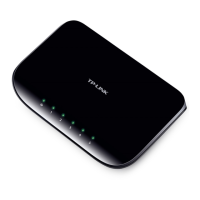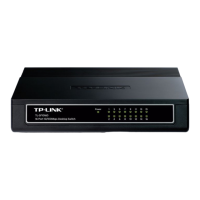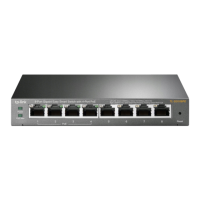Switching Configuring LAG
User Guide 29
Note:
● It is recommended to configure the LAG function before configuring the other functions
for the member ports.
● Ensure that devices on both ends of the aggregation link use the same number of physical
ports with the same speed and duplex mode, flow control setting and QoS setting.
● Mirroring and mirrored ports cannot be added to an LAG group.
● The maximum of LAG groups varies among different devices. To check the maximum of
LAG groups, refer to the actual web interface.
● Each LAG group has 2 port members at least and 4 port members at most.

